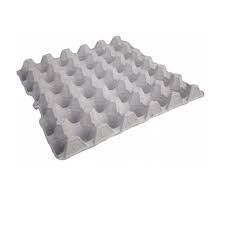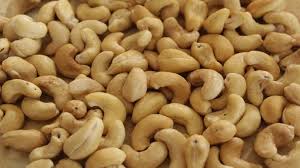Mechanized Soya Bean Cultivation and Soya Oil, Hull and Cake Production in Nigeria; The Feasibility Report.

Soya bean is one of the most common food crops grown and consumed in many parts of Africa. Soy bean (Glycine Max) is classified as an oil seed rather than a pulse.
It is a species of legume native to East Asia (China) and still remains a major crop there till today. Prior to its use for fermented food products, soybean was considered sacred for use in crop rotation as a method of fixing nitrogen.
The bean on dry weight basis is twenty-nine percent (29%) oil, forty percent (40%) protein, thirty-five percent (35%) carbohydrate and about five percent (5%) ash. Its protein is heat stable, thus allowing it to withstand high temperature during cooking.
Though production and utilization of soy bean started in the Orient as far back as the 11th Century, this ancient crop became grown in other parts of the world just in the 20th Century. It was first introduced in Europe in the 1700s and in America in 1804 (Katz, 1998).
It was introduced to Africa from China in the late 19th Century and is now widespread across the continent including Nigeria. The earliest known cultivation of soy beans in Africa was in 1896, when they were grown in Algeria, at a government botanical station and later in 1903, when they were grown in South Africa.
From 1908, there has being a dramatic and tremendous increasing interest in growing Soybean in Africa, as Europe for the first time began import large quantities of Soybean in response to severe shortages and prices of oil.
By 1982, Soybean and Soy foods, though still played a very minor role in Africa have been identified as having great potentials in arresting the declining per capital food production as well as protein and calorie consumption in the Continent including Nigeria.
Soybean was first introduced to Ibadan, Oyo State, Nigeria in 1908 with little or no success in the rainforest ecology of the State (Fennel, 1966).
In 1928, it was introduced to the savanna area ofNorthern Nigeria where the soil and climatic conditions supported its production.
The crop wassuccessfully cultivated in 1937 for multiplication and commercial production in Benue State(Nyiakura, 1982). Since then, many small-scale farmers in the south central part of the countryhave continuously incorporated propagation into their cropping systems.
Initially the crop was cultivated for export with the support and encouragement of Groundnut Board.
Nigeria presently produces about five hundred thousand (500,000) MT of Soybean annually making it one of the largest producer’s of the product on the African continent. Soybean is a legume which is produced in most the middle belt of the country with Benue state accounting for about forty percent (45%) of the total production in country.
Soya Bean is a leguminous crop whose importance and economic benefits cannot be over emphasized. Products that can be gotten from soya bean include soy cake, soy oil, full fat soya, soy flour, soy milk, ogi and dawadawa (soup condiment)
Due to the ban on the importation of vegetable oil, the nation has witnessed a deficit in supply of the product though much improvement has been recorded in the local production of the product.
This report seeks to examine the financial viability or otherwise of establishing a mechanized soya bean plantation and soya bean oil processing plant using mechanical press technology in Benue State, Nigeria.
Soybean oil refers to a clear yellow vegetable oil which is extracted from the seeds of soybean. It is a rich source of essential nutrients like vitamins, proteins, fatty acids and plant sterols.
It is one of the most widely consumed cooking oils. As a drying oil, processed soybean oil is also used as a base for printing inks (soy ink) and oil paints. As a bye product, soya bean cake and hulls is produced during the production of soya bean oil.
Soybean cake and hull is used in food and animal feeds, principally as a protein supplement, but also as a source of metabolizable energy.
The size and locations of the farm is one thousand, two hundred and fifty (1,250) hectares of land located in Benue State.
Table of Contents
EXECUTIVE SUMMARY 1.0 Business Overview 1.1 Description of the Business 1.2 Vision and Mission Statement 1.3 Business Objective 1.4 Value Proposition 1.5 Critical Success Factor of the Business 1.6 Current Status of Business 1.7 Description of the Business Industry 1.8 Contribution to Local and National Economy 2.0 Agricultural Practice 2.1 Varieties 2.2 Planting 2.3 Manures and Fertilizers 2.4 Weeding 2.5 Climate / Irrigation 2.6 Harvesting and Yield 2.7 Herbicides 2.8 Soil Type 2.9 Diseases and Pests 3. Marketing Plan 3.1 Description of product 3.2 Product delivery 3.3 The Opportunity 3.4 Pricing Strategy 3.5 Target Market 3.6 Distribution and Delivery Strategy 3.7 Promotional Strategy 4. Cultivation / Production Plan 4.1 Description of the Location 4.2 Raw Materials 4.3 Cultivation / Production Equipment 4.4 Cultivation / Production Process 4.5 Production Cost 4.6 Stock Control Process 4.7 Pre-Operating activities and expenses 4.7.1 Operating Activities and Expenses 4.8 Project Implementation Schedule 5.0 Organizational and Management Plan 5.1 Ownership of the business 5.2 Profile of the promoters 5.3 Key Management Staff 5.3.2 Management Support Units 5.4 Details of salary schedule 6. Financial Plan 6.1 Financial Assumption 6.2 Start - up Capital Estimation 6.3 Source of Capital 6.4 Security of Loan 6.5 Loan Repayment Plan 6.6 Profit and Loss Analysis 6.7 Cash flow Analysis 6.8 Viability Analysis 7.0 Business Risk and mitigation factor 7.1 Business Risks 7.2 SWOT Analysis
Project Specification:
Additional Info
Get this Report
Direct bank transfer
To order the report, Please do pay the sum of ₦150,000 into
Account Name : Foraminifera Market Research Ltd
Account Number : 274 20 569 37
Account Name : Foraminifera Market Research Ltd
Account Number : 101 76 603 95
Account Name : Foraminifera Ventures
Account Number : 011 66 066 32
Make your payment directly into our bank account. Please use your Order ID as the payment reference. Your order will not be shipped until the funds have cleared in our account.
Instructions
After payment call us on 01 -29 52 413 / 08033782777 or email us at foraminiferamarketresearch@yahoo.com with the payment details. After payment confirmation, the soft copy of the report would be sent to you within 24 hours.



